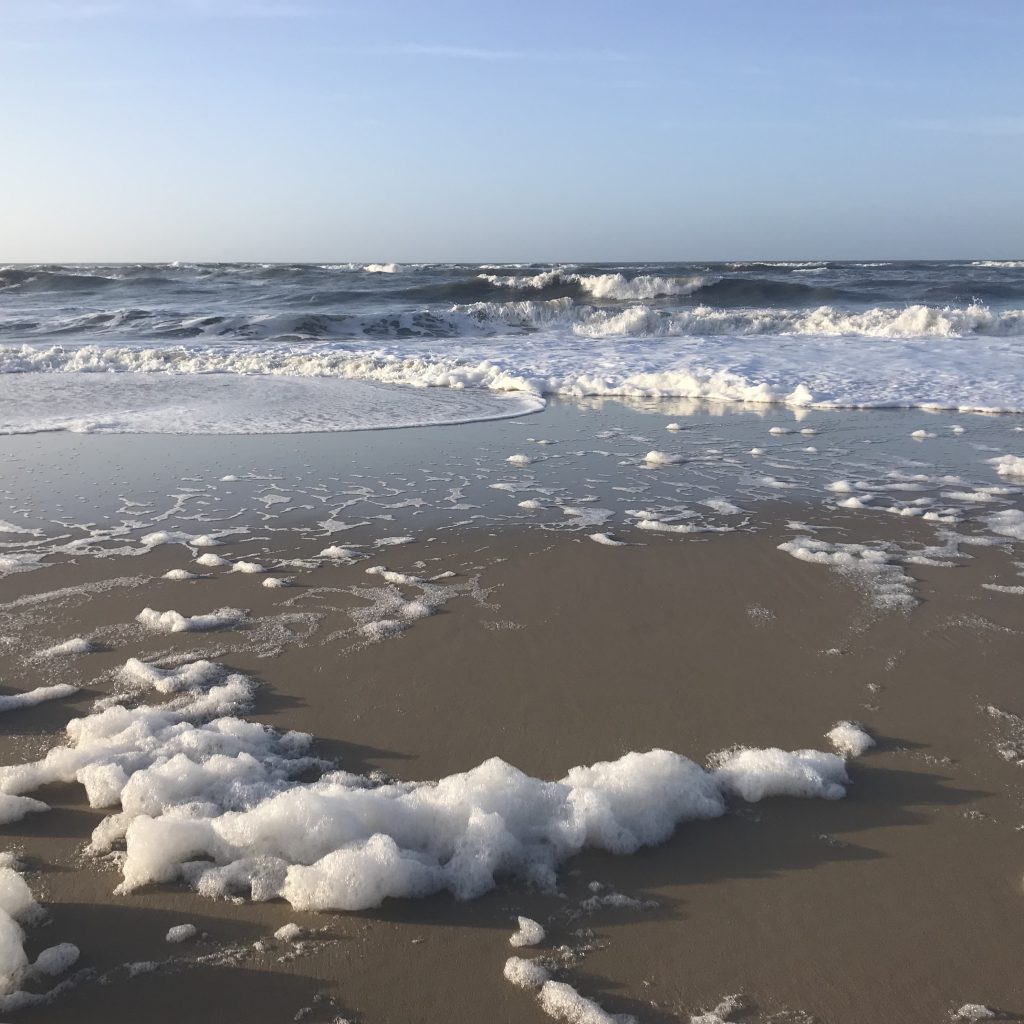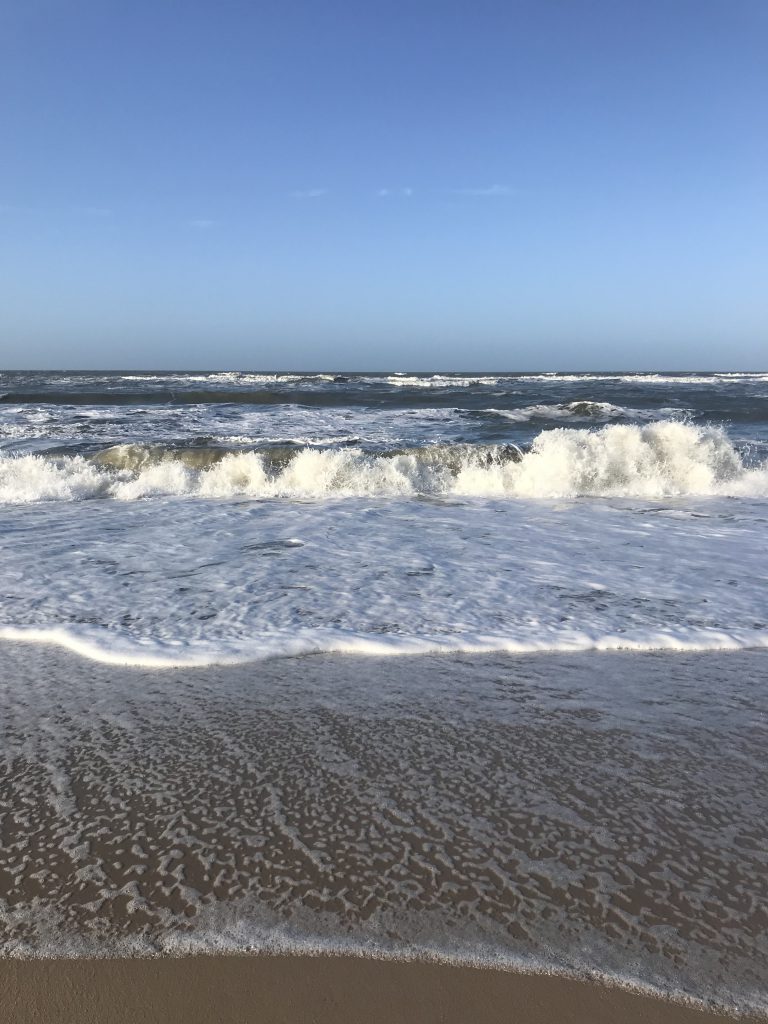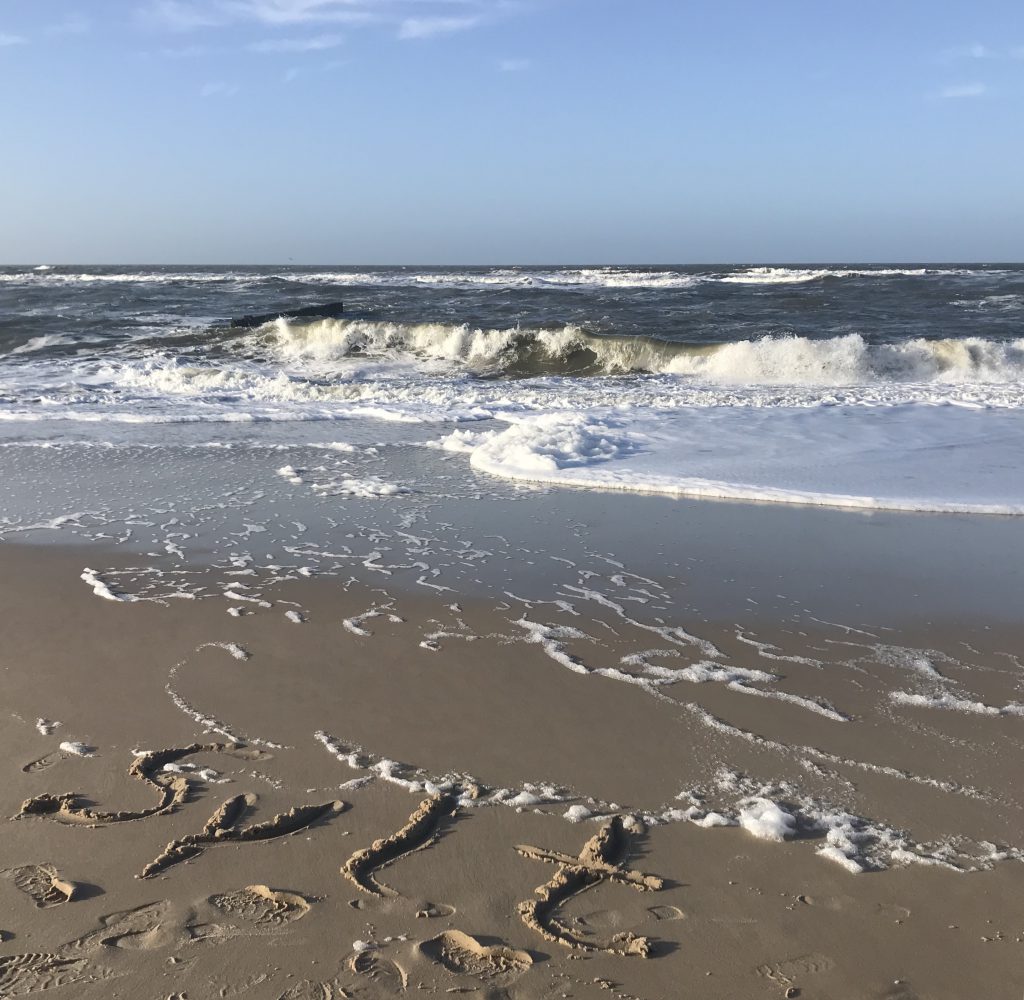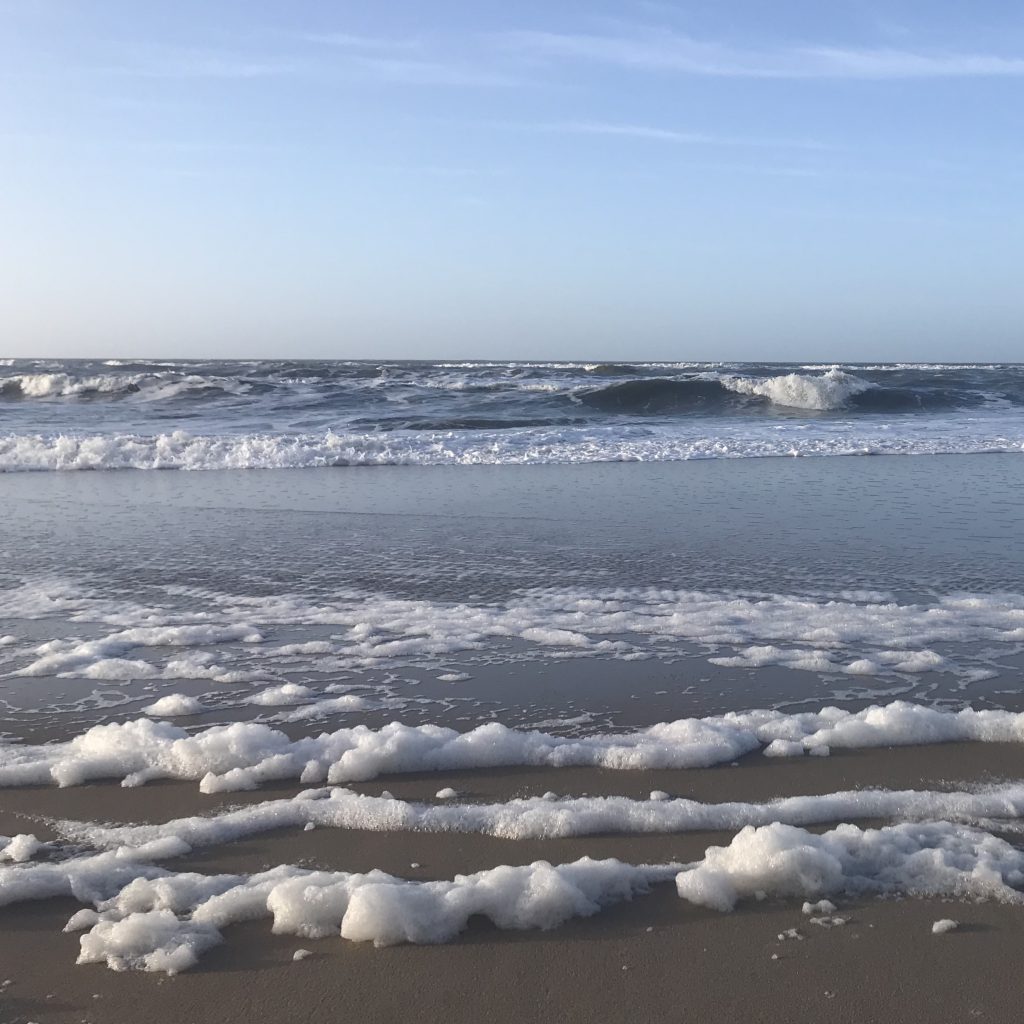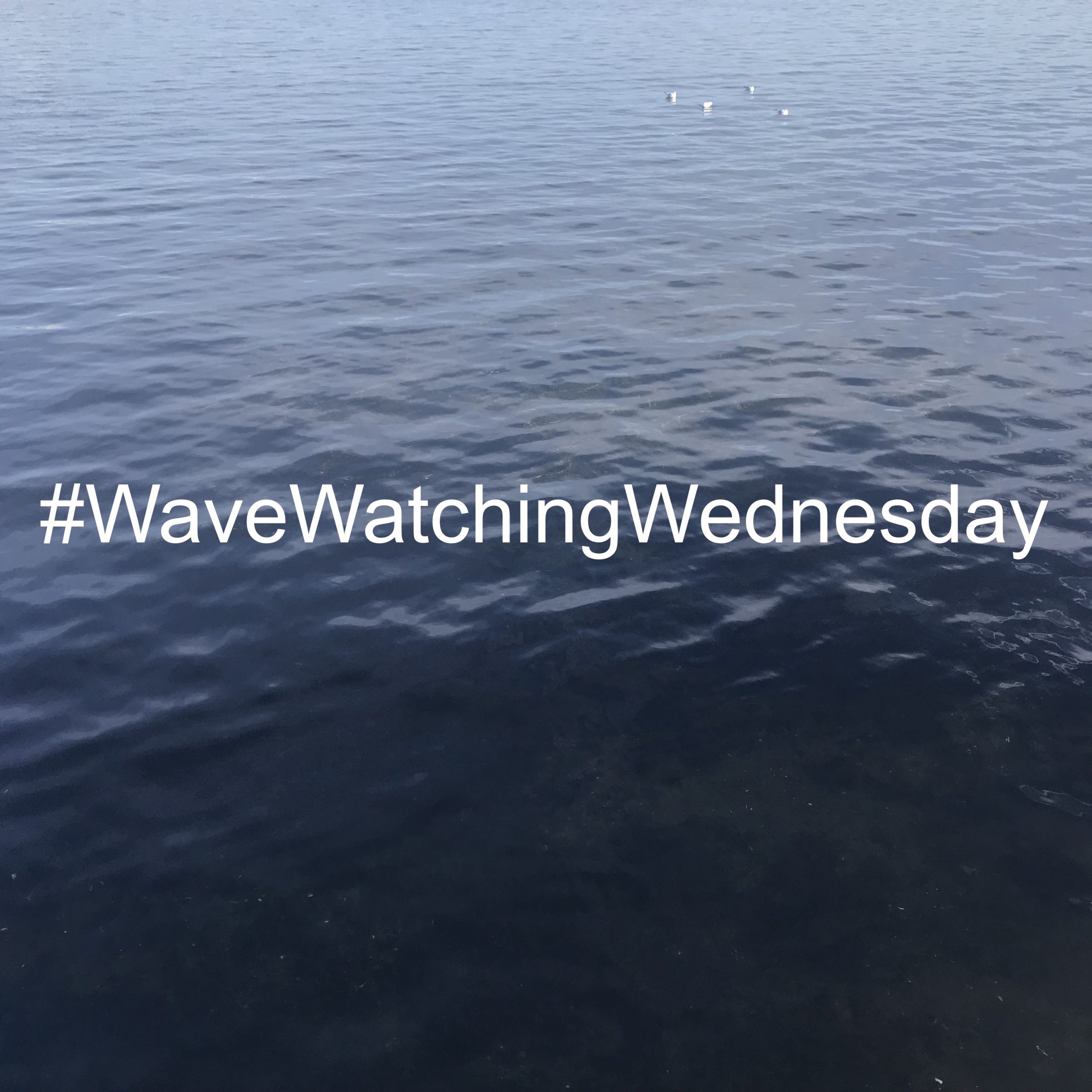
#WaveWatchingWednesday
For #WaveWatchingWednesday: A collection of pictures that I took (and shared on my wave watching Insta @fascinocean_kiel over the last week. For some reason with a lot more commentary on here than on Insta itself, don’t know why. Maybe because I am writing this while it’s still dark outside and I am waiting for it to get light so I can go do some wave watching? ;-)
Nothing makes me instantly as happy as looking at water. Especially blue water, but any water will do. This picture below? That’s what happiness looks like for me. No matter what else is going on in my life, this view instantly makes me feel calm and content. And happy. What is it for you that has a similar effect on your emotions?
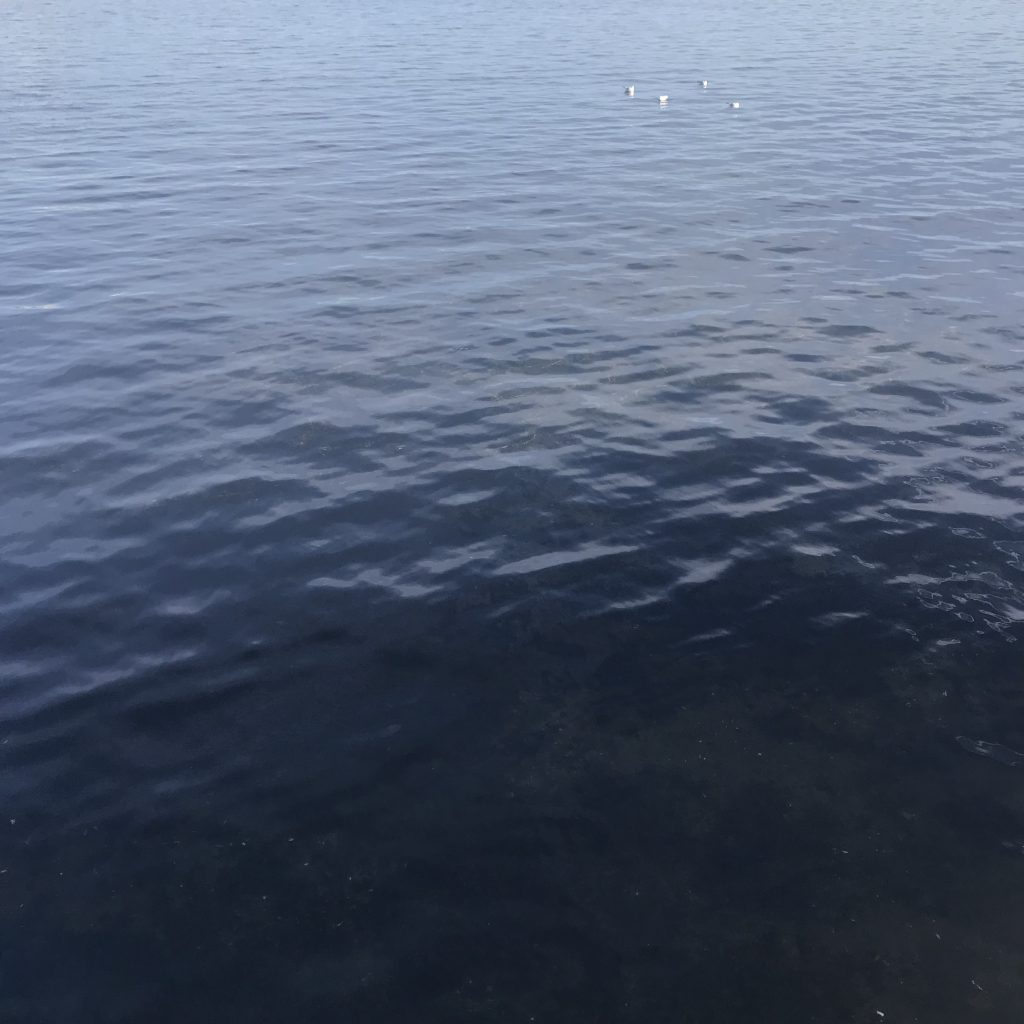
And I discovered a new perspective that I am a little obsessed with right now. Right where I live, there is a big art piece out of metal that looks a little ship-wreck-y and very nautical (it’s called “Hafen 77” by artist Felix Fehlmann). It has circular holes in it, reminiscent of portholes, but it never occurred to me before to use them to frame pictures in. This is my fist attempt at it — what do you think?
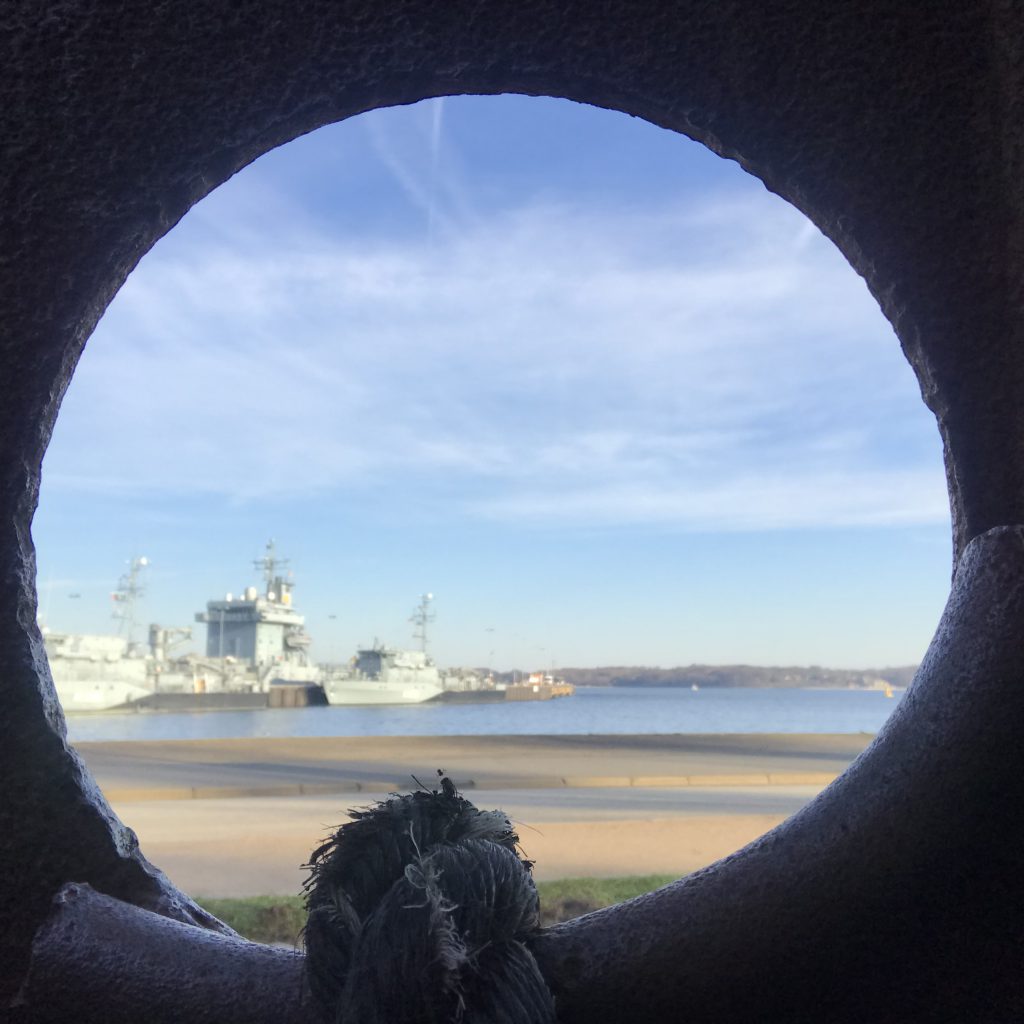
Now that I have discovered that porthole view, I wanted to go back the next morning to take a picture with different lighting. Unfortunately I was 2 minutes late to catch the Sweden ferry through the porthole! I hadn’t thought about how that would make a great picture until I saw her and it was already too late. But luckily there are more ships going in and out Kiel port, so there will be another chance!
To keep my Instagram feed looking nice I couldn’t post the next porthole pic right after the first one, but luckily there was pretty cool wave watching that morning, too!
This is a picture of several ducks’ wakes: see how they are forming 2D Mach cones with the ducks at the tip? Taking pictures of waves is always best around sunrise and sunset, because then the contrast between a light sky and dark land helps show the wave structures as differently sloped parts of the waves reflect different parts of the high contrast surroundings.
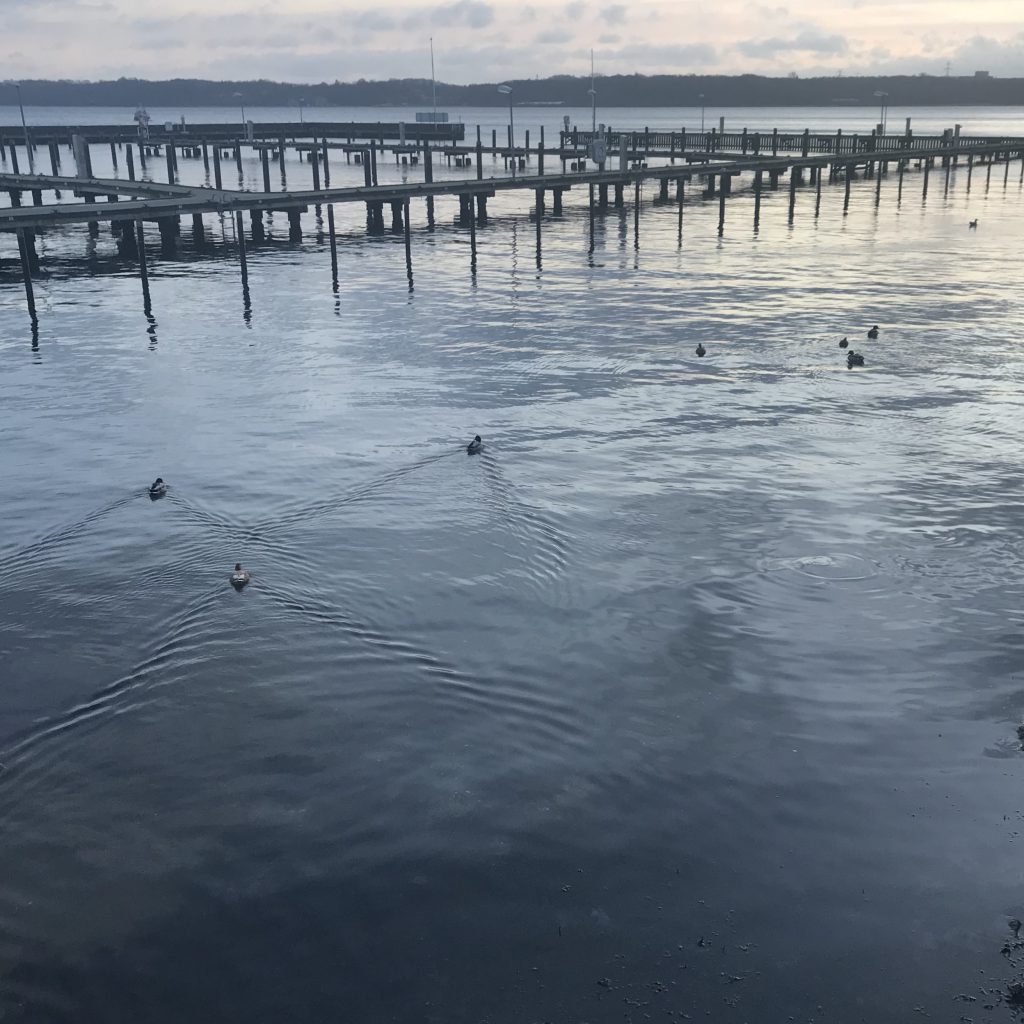
Here is the mystery spot again (well, mystery for Instagram, I already wrote above that this is the “Hafen 77” art by Felix Fehlmann, so you already knew).
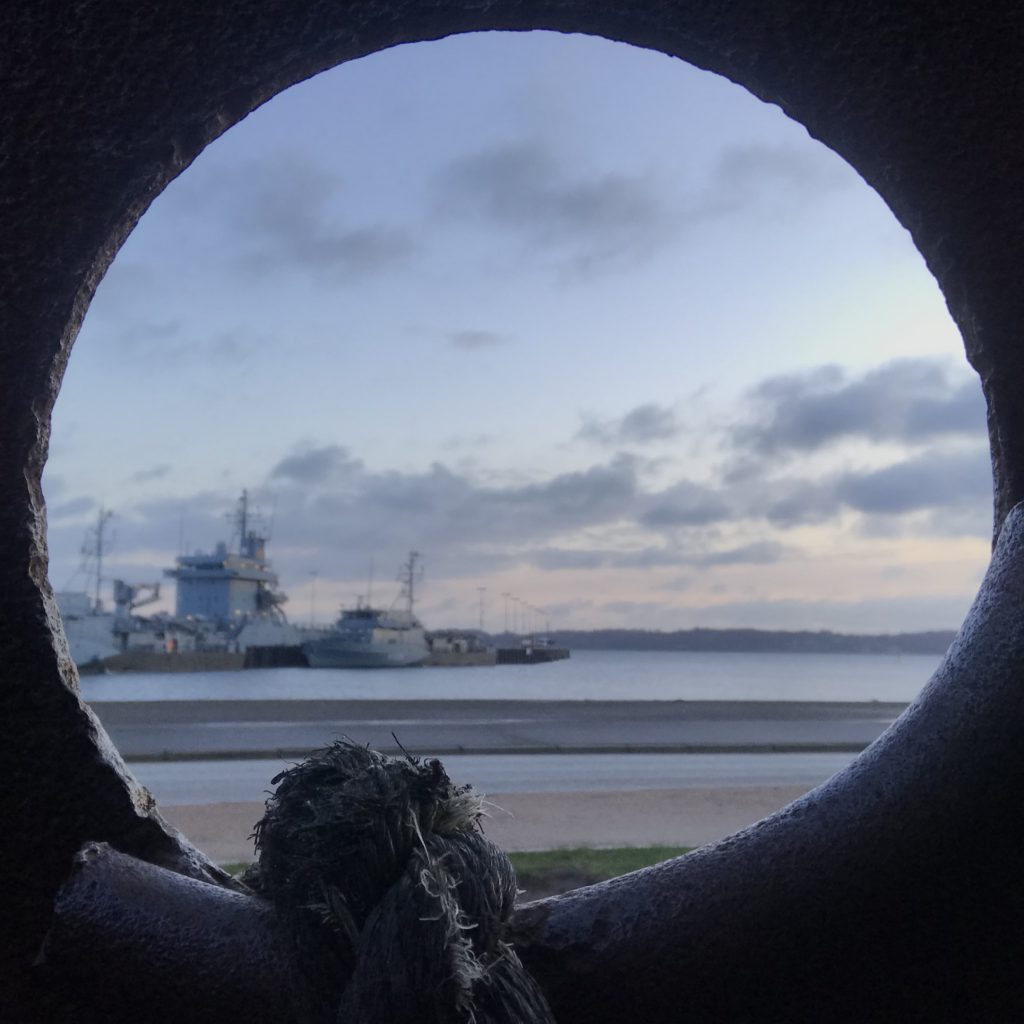
But this time also “zoomed out” so people can figure out where this is!
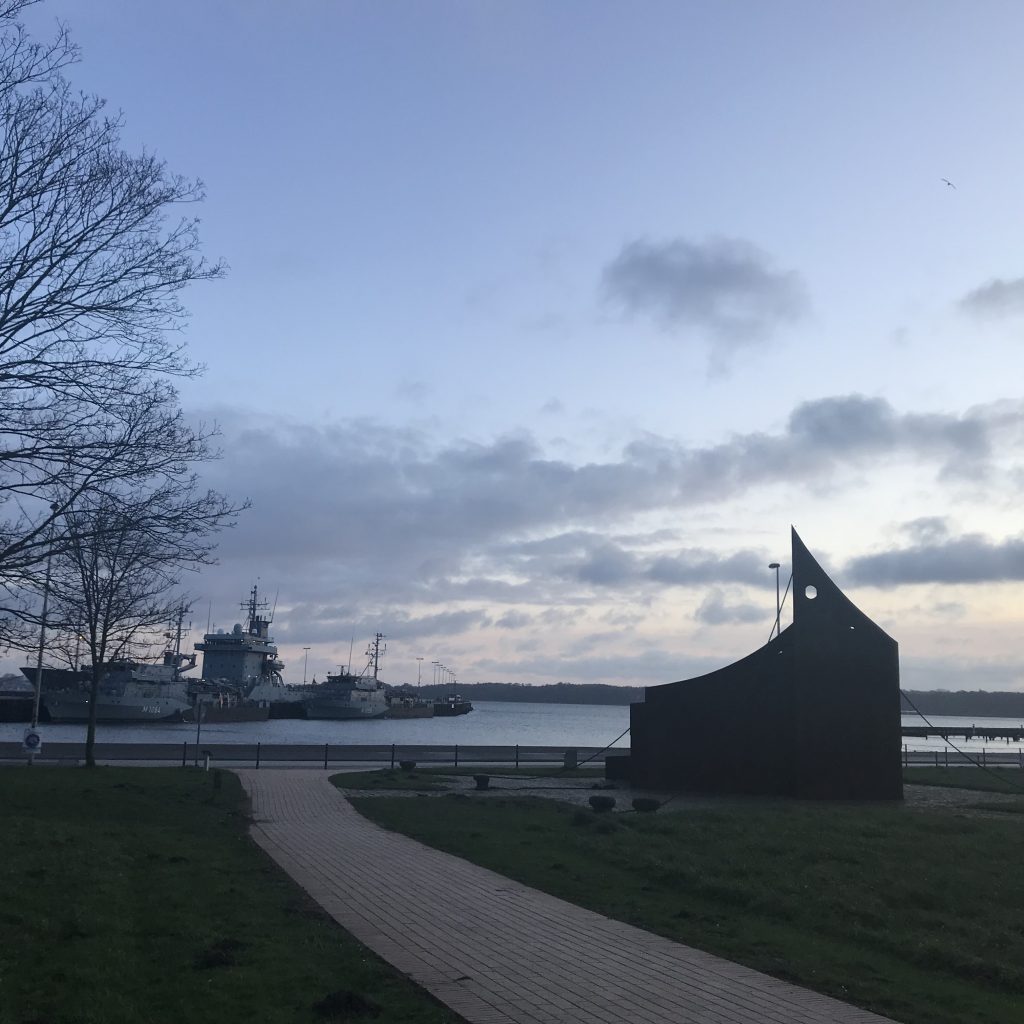
And then I had a brilliant day trip with Sara!
Sylt, an island on the german North Sea coast, is amazing for wave watching. But amazing waves come at a great cost: the nice sand beaches are threatened by coastal erosion and have to be protected and maintained with huge efforts.
On our mini-excursion, we saw many different measures for coastal protection, like tetrapods (those gigantic four-legged concrete structures) and different kinds of wave breakers.
I took 625 pictures (ok, mainly of waves, but also a lot of the ongoing coastal protection construction works!) that I won’t manage to sort through tonight, so this is your chance: which coastal protection structures should I write about first? (All the following pictures belong to this blog post until the next text interrupts the flow ;-))
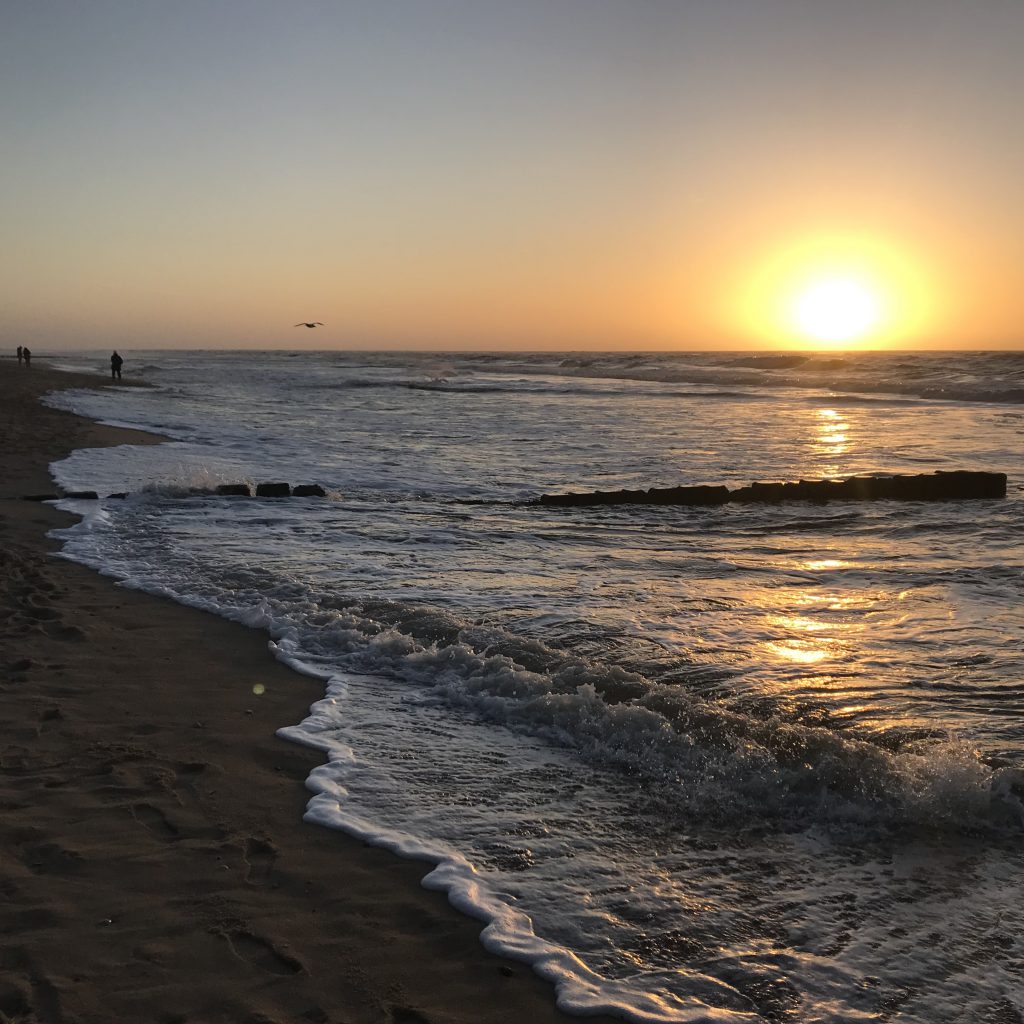
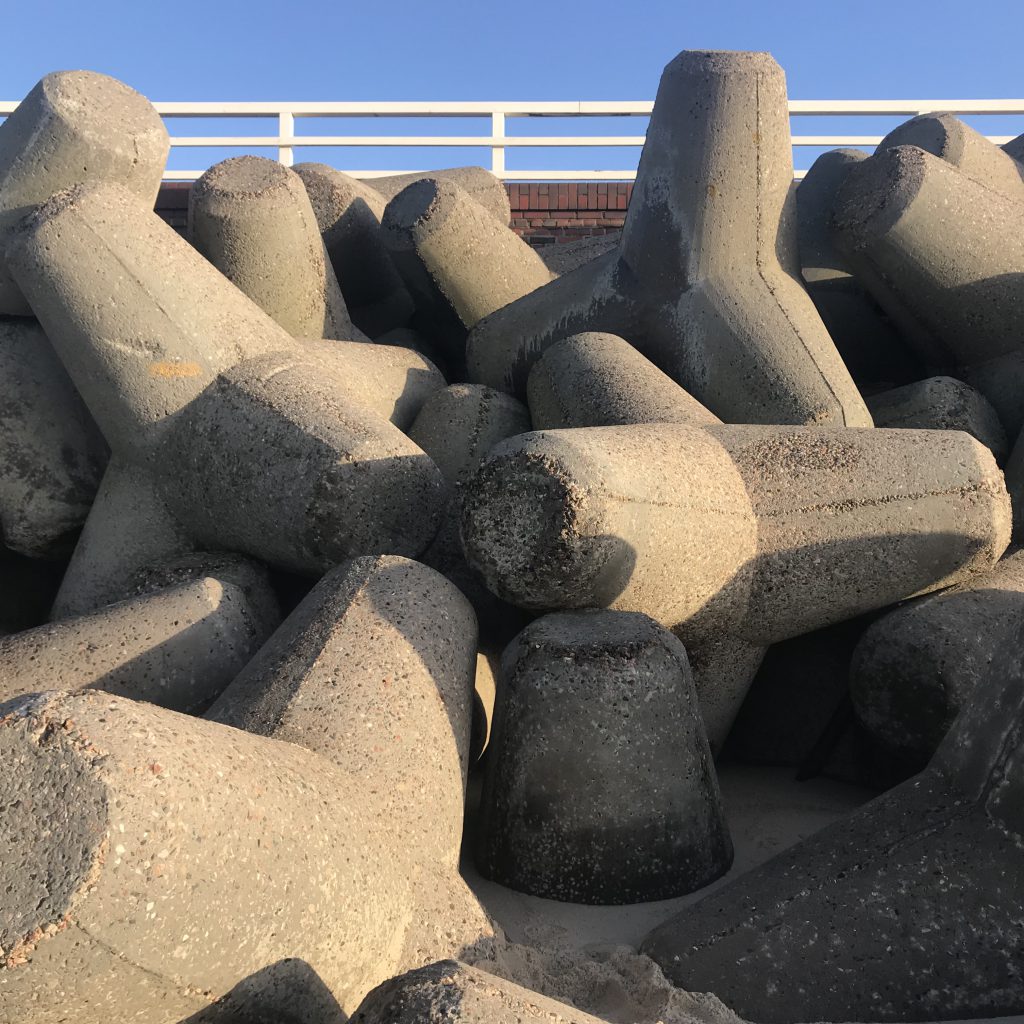
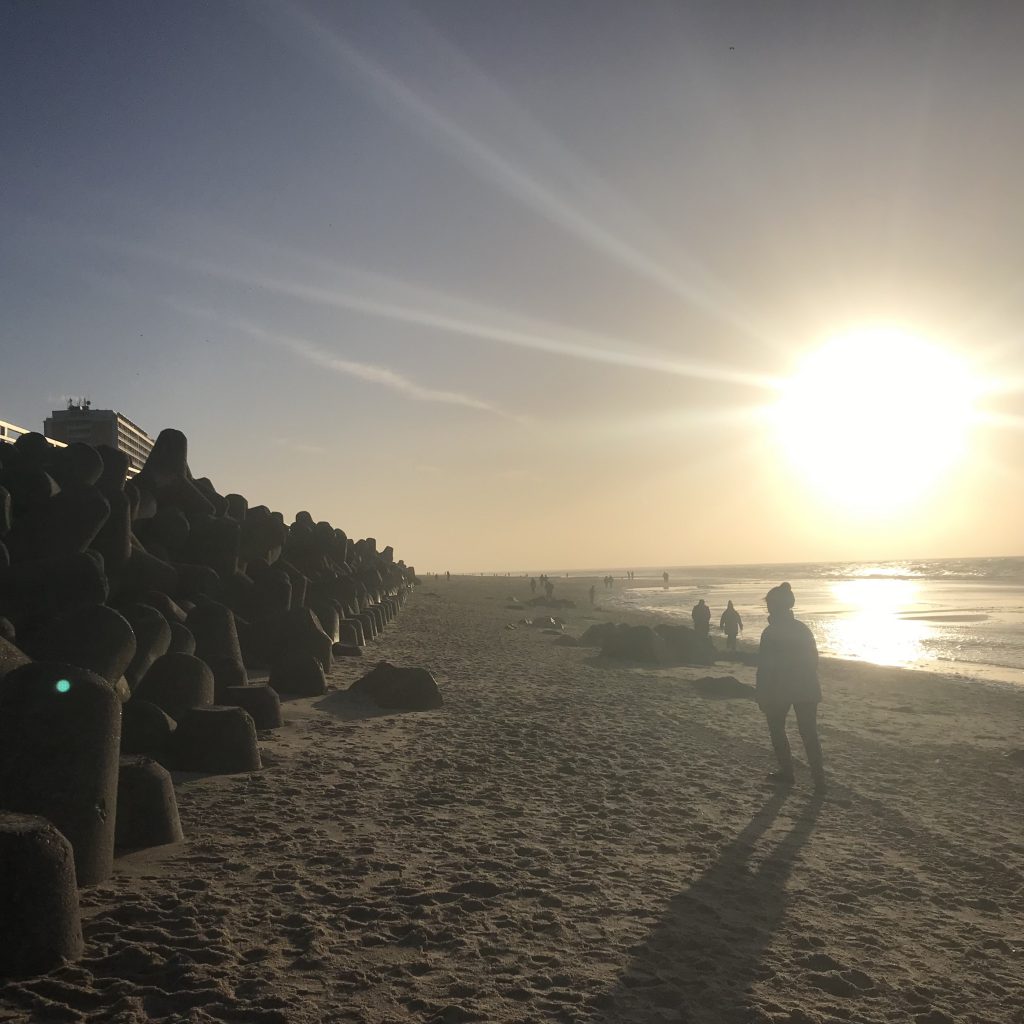
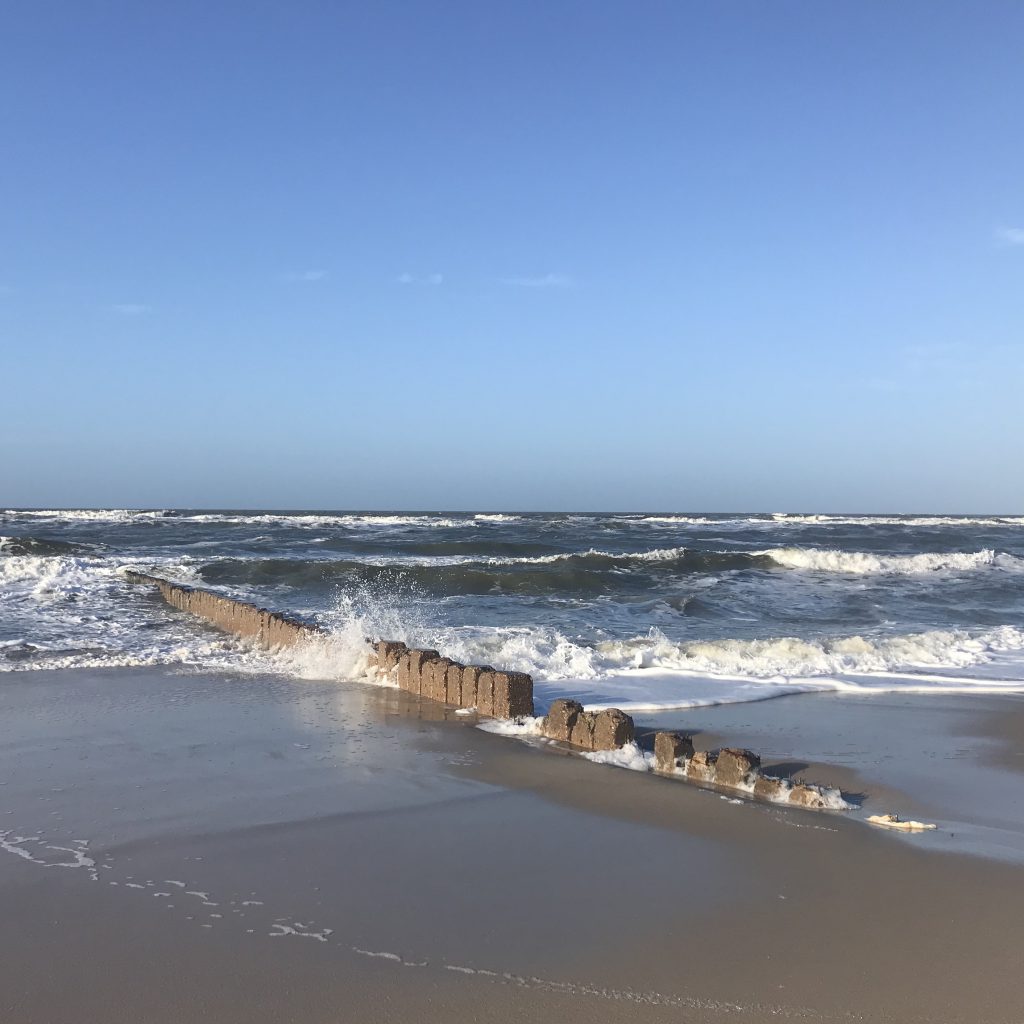
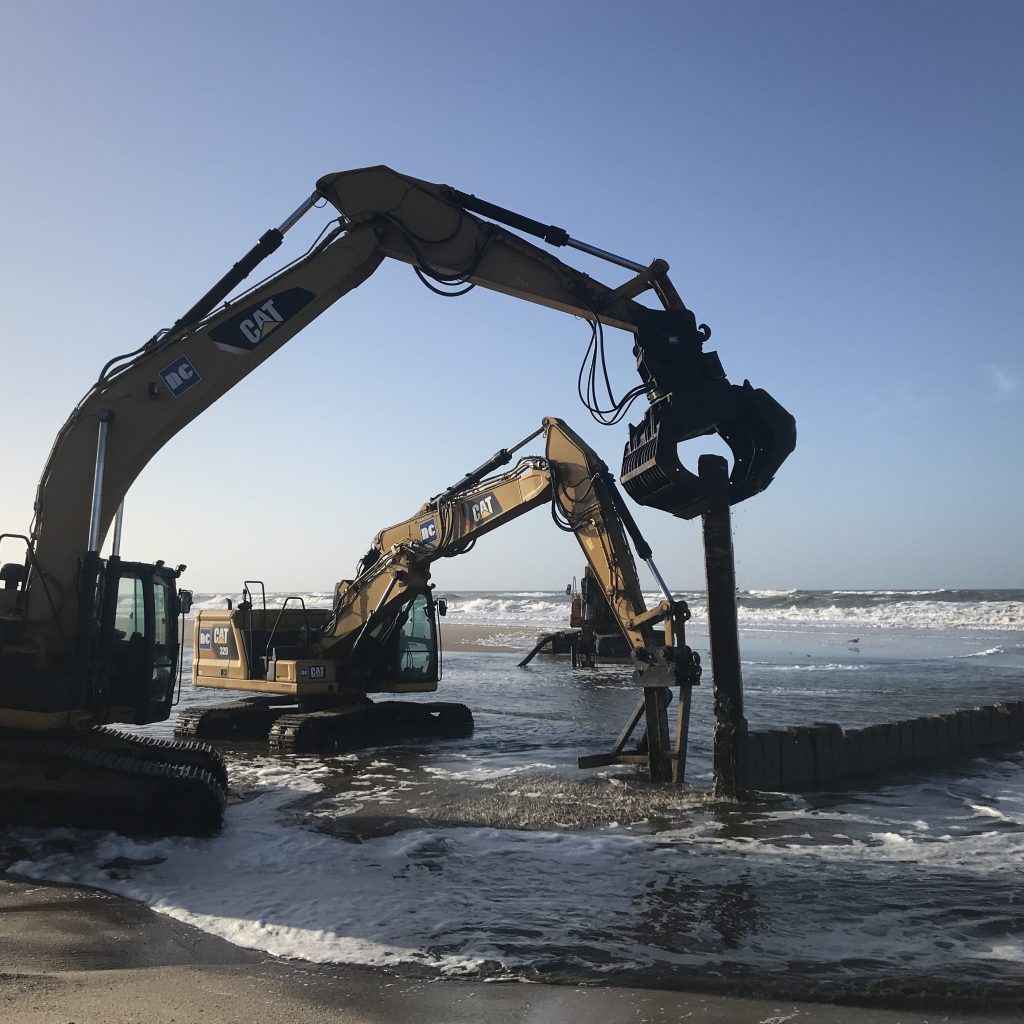
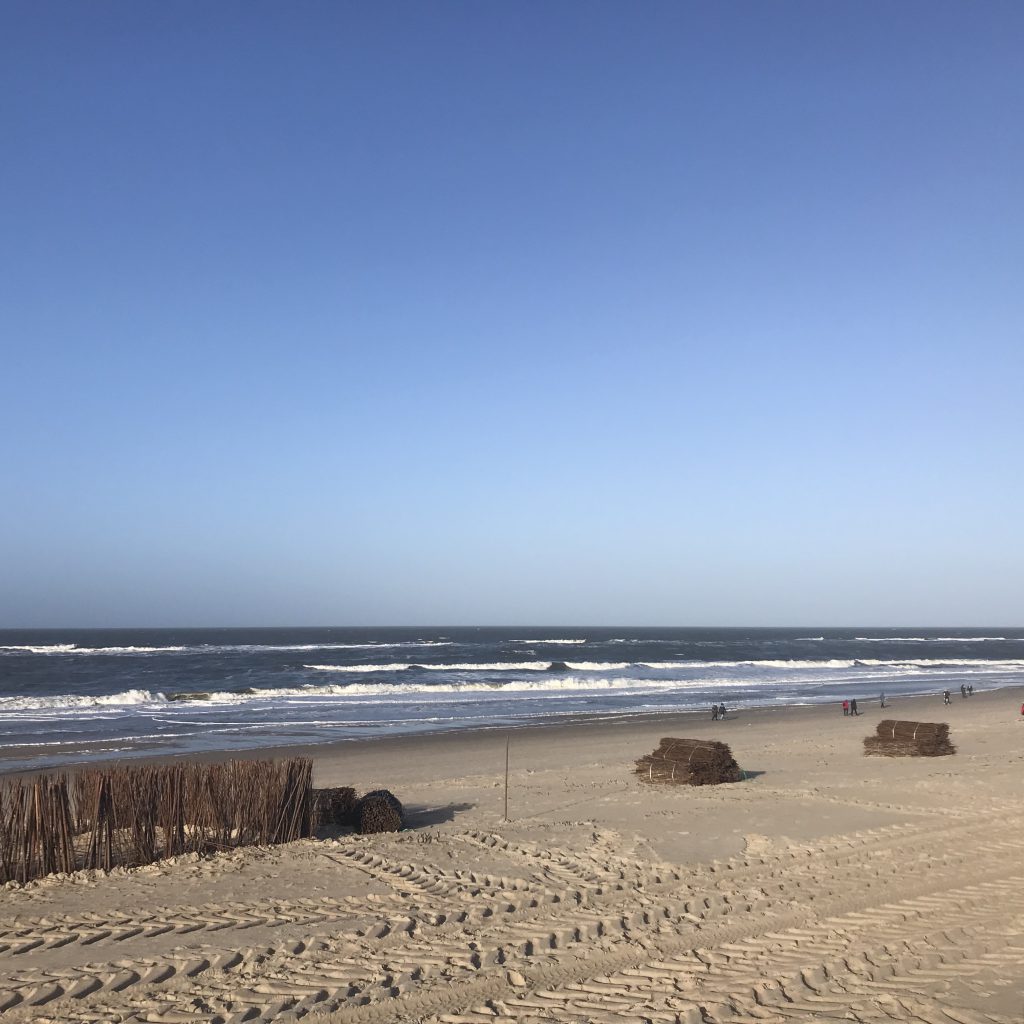
The next post wasn’t a wave watching post, for #SciCommSunday I wrote about why I post selfies on my social media (and this picture is clearly not a selfie, it was taken by my colleague Sebi Berens (www.sebiberensphoto.com / @sebiberensphoto)). But I like it a lot and was excited to post it on my Instagram using the excuse of #scientistswhoselfie ;-)
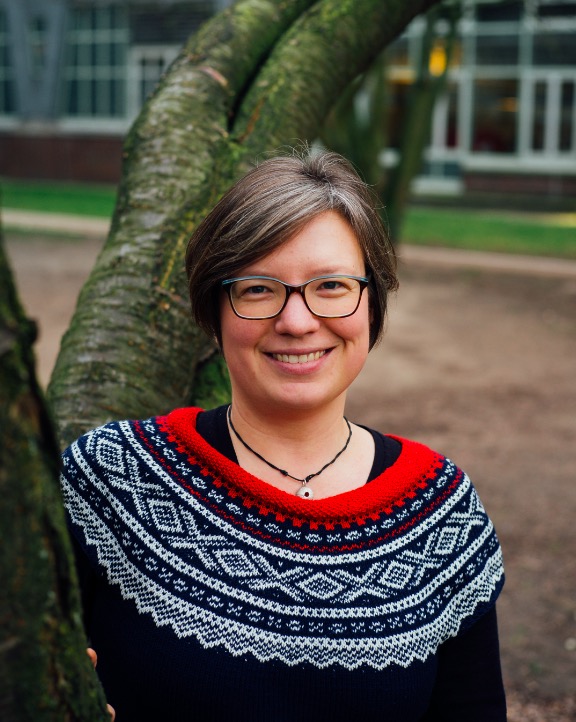
It’s really difficult for me not to watch the spectacle of the Oslo ferry making a U-turn in the narrow Kiel fjord before backing up into its berth. So difficult, that I took my conference call to the roof terrace and my colleague asked if I was swimming in the sea because apparently that’s what it sounded like on the other end. So ferry-watching was unfortunately cut short.
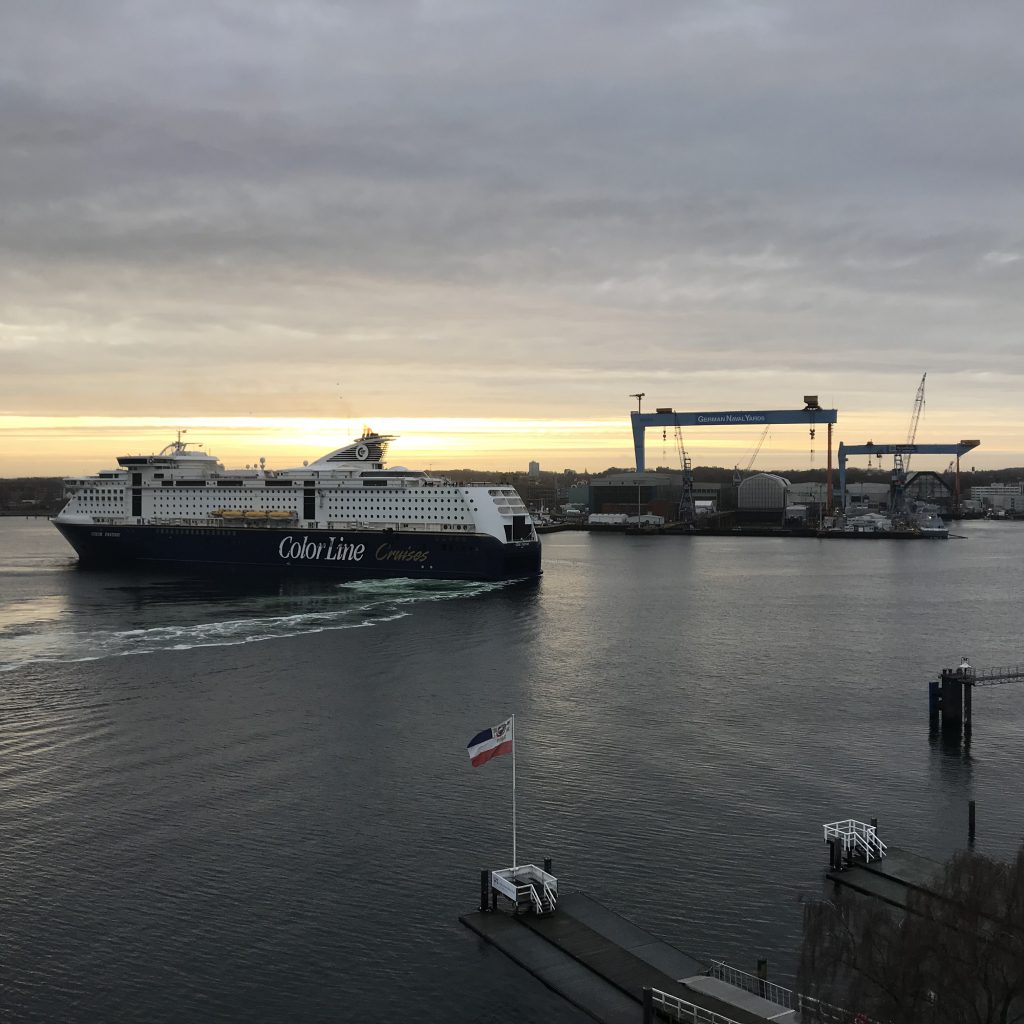
But watching the ferry wasn’t my main reason for visiting Geomar, see below what we were up to: Torge and I presented a seminar on “It’s always a great idea to play! Teaching ocean and atmosphere dynamics with rotating tanks” (or similar, can’t remember exactly ;-)) We gave a short presentation and then invited everybody “to play”. We had four rotating tables set up, each prepared for a different experiment. And people seemed to enjoy doing hands-on experiments a lot. So hopefully there is a lot more playing with a lot more players in our future! :-)
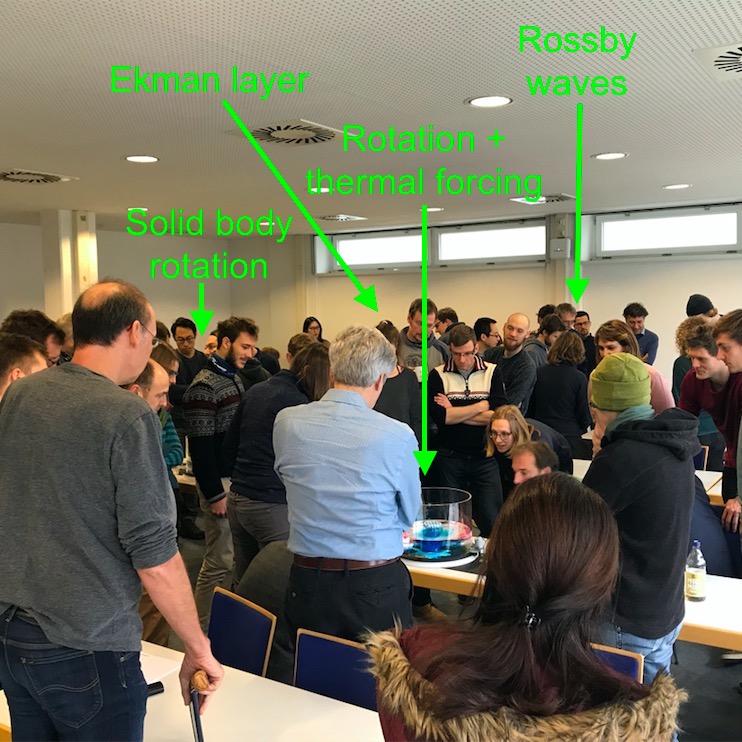
And then a little more about that amazing day trip to Sylt:
Why is there so much foam on the beach? Two factors are playing together here: Breaking waves trapping air under water that tries to get back up and out, and dissolved organic matter lowering the water‘s surface tension. Both have to be present at the same time: if the water was calm and no waves were breaking, there wouldn’t be a way to get air into the bubbles of the foam because no air would get underneath the water. And if the surface tension wasn’t lowered, the bubbles wouldn’t be able to exist, they would just collaps into drops of water.
Pretty counterintuitive that one has to lower surface tension to make bubbles that are stable, isn’t it?
(Next four pics show different foam situations on the beach)
